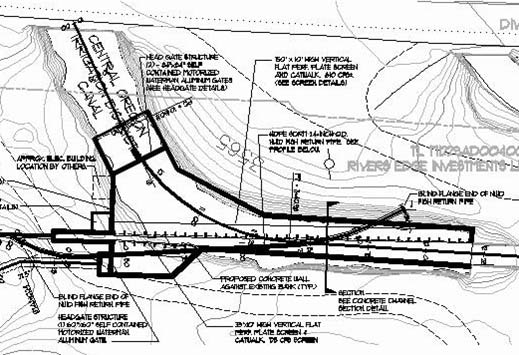Fishscreen

Swalley Irrigation District, Central Oregon Irrigation District and the Lone Pine Irrigation District have partnered to develop a new fishscreen installation at the districts' diversions near North Canal Dam in Bend (near the Riverhouse). There are two fishscreens, meeting in a V-shape. The smaller screen on one side prohibits fish from entering Swalley's pipeline to the main canal and a larger screen on the other side of the V will protect fish before the diversion into COID and Lone Pine. The screens replace old-style louvers the districts installed in the 1960s as recommended then by the Oregon Department of Fish and Wildlife (ODFW).
The new screens have been developed to meet criteria approved by the ODFW and the U.S. Fish and Wildlife Service to meet today's fishery protection requirements mandated by the federal Endangered Species Act and other protection needs. Engineering to meet the agencies requirements was accomplished by DEA in Bend. The new screens went into operation in 2004.

The three districts divert a total of 785 cubic second feet (cfs) of flow at this location on the Deschutes River to provide irrigation on over 50,000 acres of agricultural land in the Bend/Tumalo/Redmond area. The screens replicate successful installations in Stayton, Oregon, in Northern California, Yakima, Washington, and at Arnold Irrigation District in Bend.
Partnership among the districts made the design and maintenance cost effective. The project came in just under $1 million dollars. Swalley's share was about 24% of that cost. The project was granted $293,000 from the U.S. Fish and Wildlife Service grant program (FRIMA), and $150,000 from the Oregon Watershed Enhancement Board through ODFW's fishscreen funding program.

